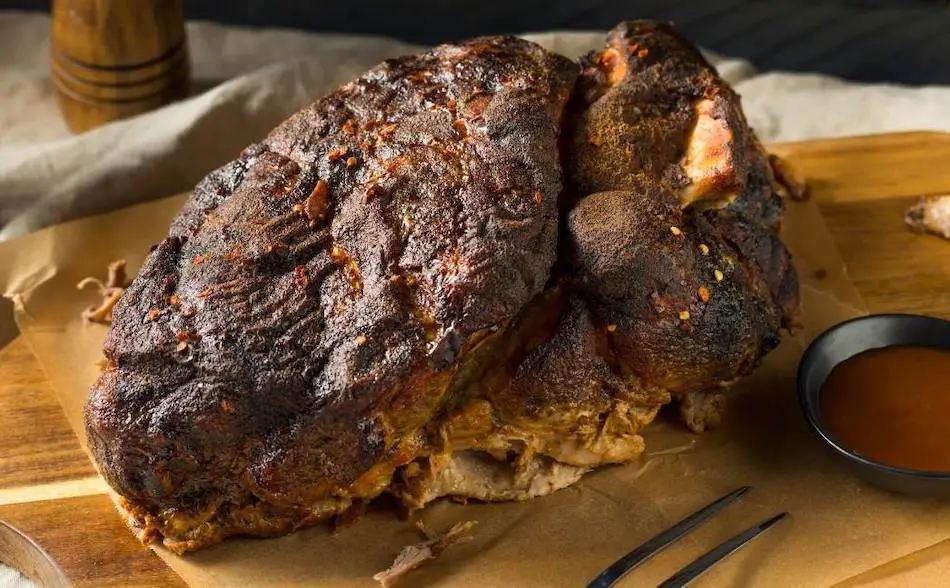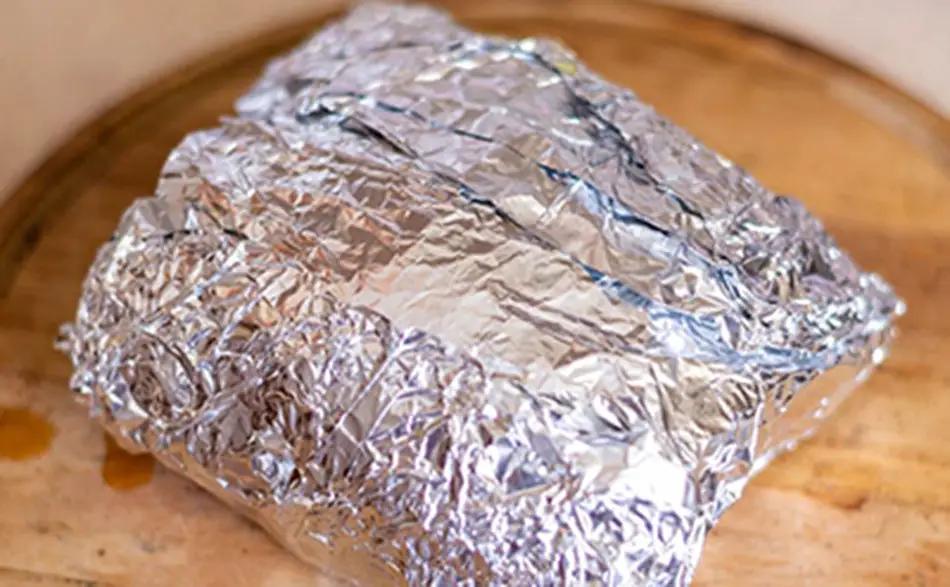
If you’ve ever attempted to cook pork butt and ended up with a dry, tough piece of meat, you know how frustrating it can be. Resting your pork shoulder is a crucial step in the cooking process when it comes to low and slow cooking methods. It’s something that can’t be skipped if you want to achieve juicy, tender meat. To find out more about resting pork butt, I did some research and discovered the importance of this step in the cooking process.
To rest pork butt, allow it a minimum of 1 hour resting time before slicing, although longer is preferred. After removing the pork from the heat, you can vent it by opening the foil for 5 minutes or place it in holding by wrapping it in a towel and placing it in a dry cooler. While in holding, the pork will remain hot for over 4 hours or until you’re ready to slice and serve. This helps the meat to redistribute moisture and re-absorb some of its juices, which can be lost if the pork is sliced too soon. Properly rested pork butt will result in juicy, tender meat.
| Step | Resting Pork Butt |
|---|---|
| 1 | Allow pork butt a minimum of 1 hour resting time, but longer is preferred |
| 2 | After removing the pork from the heat, vent it by opening the foil for 5 minutes |
| 3 | Alternatively, wrap the foiled pork butt in a towel or dish cloth and place it in a dry cooler |
| 4 | Leave the meat in the dry cooler until you are ready to slice and serve |
| 5 | When slicing or shredding, only do what you need to avoid drying out the meat |
Step By Step – How To Rest Pork Butt
- Once the pork has reached an internal temperature of 195°F to 200°F, then remove it from the smoker or oven.
- Open the foil for 5 minutes to allow the steam to escape.
- Wrap the foiled pork butt in a towel or dish cloth.
- Place the pork butt in a dry cooler.
- Leave the meat in this holding phase until you are ready to slice and serve.
- When you are ready to slice, only shred what you need. If you slice the whole pork butt, it will dry out.
Why Rest?
Resting pulled pork after smoking is important because it helps the meat to reabsorb some of the juices that are released during the cooking process. If you don’t let the pork rest, all of those juices will end up on your cutting board when you start slicing, which can leave your pork feeling dry and overcooked.
On top of that, resting your pulled pork gives the meat a chance to cool down and firm up a bit, which makes it easier to slice and shred. And since pulled pork is usually served at room temperature or cold, taking a little time to let it rest will also help it to reach the right temperature for serving.
More Tips On Resting Pork
Resting your pork butt after cooking is crucial for getting juicy, tender meat. It might seem like a small step, but trust us – it makes a huge difference. You should aim to rest your pork for at least an hour, but longer is always better if you can manage it. Just wrap it in a towel or foil and stick it in a cooler to keep it warm until you’re ready to serve.
When you’re planning your cook, make sure to factor in resting time. This means adding on an extra hour or two for every pound of pork you’re cooking. So if you’re working with a 6 pound pork shoulder, you can expect the whole process to take around 13 to 14 hours – with some of that time set aside for resting. And if you want to speed things up a bit, you can try cooking your pork at a higher temperature (like 250°F) to cut down on the cook time.
Finally, when it’s time to slice and serve your pork, make sure to only do what you need. If you pull apart the whole pork butt, it’ll dry out pretty quickly. Better to only shred what you need and leave the rest in one piece until you’re ready for more. With these tips in mind, you’ll be well on your way to perfect, juicy pork butt every time.
Holding In Dry Cooler
Once you have vented the pork butt for 5 – 10 minutes, wrap the foiled pork butt in a towel and place it into a dry cooler. This will keep the pork hot for hours, and the meat will have a chance to redistribute moisture. This method is called holding, which is a little different to resting. You can rest the pork butt on the counter for an hour, but any longer, it’s better to place the pork into holding where it can remain for hours.

Faux Cambro
The ultimate way to store meat after cooking is a Faux Cambro. Professionals, catering companies and restaurants use a Faux Cambro to store their meat after cooking. If you do a lot of meat smoking or entertaining, then you might find a Faux Cambro useful. Although some might think a Faux Cambro to be overkill just for backyard barbecue.
Timing
Holding the pork butt in a dry cooler will give you some flexibility as to when you want to slice and serve. If the pork butt is stored adequately, it can stay hot for over 4 hours. This will allow you to wait for your guests to arrive, and slice the pork at the dinner table and the meat will be hot, juicy and tender.
Keep The Butt In Foil
Once you have removed the pork from the smoker, leave the meat in aluminium foil. You can open the foil a little to vent the meat, as this will let out some of the steam. If you don’t vent the pork, there will be some carryover cooking. This is why it is best to remove the pork once it hits around about 195°F, because this will allow for some carryover cooking.
“Aaron Franklin’s Pork Butt Recipe”

Dry Pork – Other Causes
There are several reasons your pork butt will end up dry. As with covered, lack of resting time is one reason. Other reasons include cooking the pork at high temperatures and not wrapping the meat.
High Temperatures
Cooking at a high temperature will also dry out your pork. When meat is cooked at high temperatures, all the moisture is drawn out of the meat. Pork shoulder should be cooked low to slow in the 220°F to 250°F. Once you start cooking in the 300°F range, your pork is at risk of drying out.
Not Foiling
It is also important to foil your pork shoulder in the second stage of the cook. Wrapping will help the pork retain moisture by creating steam and almost braising the meat.
No Water Pan
A water pan is another way to add some moisture to the cooking environment. Water will help regulate the temperature and prevent your smoker from getting too hot. However, remove the water pan if your smoker is struggling to maintain the target temperature.
In Summary
- Once the pork has reached an internal temperature of 195°F to 200°F, remove it from the smoker or oven
- Open the foil for 5 minutes to allow the steam to escape
- Wrap the foiled pork butt in a towel or dish cloth
- Place the pork butt in a dry cooler
- Leave the meat in this holding phase until you are ready to slice and serve
- When you are ready to slice, only shred what you need. If you slice the whole pork butt, it will dry out
- Allow pork butt a minimum of 1 hour resting time before slicing, however, longer is preferred
- After removing the pork from the heat, vent it by opening the foil for 5 minutes
- Alternatively, place the pork butt into holding by wrapping the foiled meat in a towel and then into a dry cooler
- While in holding, the pork will remain hot for over 4 hours or until you are ready to slice and serve
My Favorite Meat Smoking Tools
Thanks for checking out this article. I hope you learned a few things. Here are some of my favorite tools I use when smoking brisket that may be useful to you. These are affiliate links, so if you decide to purchase any of these products, I’ll earn a commission. But in all honesty, these are the tools I recommend to my family and friends who are just starting out.
Meat Thermometer: There are dozens of fancy thermometers on the market, but I still use my trusty TP20. For around $50, I have a high-quality meat thermometer with two probes, and can track the temperature of my smoker with one probe, and my meat with the other probe. The ThermoPro TP20 is an Amazon Best Seller because it’s the easiest thermometer to operate, is durable, highly accurate, and comes with pre-programmed meat settings.
Instant Read Thermometer: Arguably, the second most important tool you need is a fast and accurate instant-read thermometer. These tools play an important role in the latter stages of the cook when the meat needs regular checking in multiple areas. I use the ThermoPro TP19 because it can do everything a ThermaPen can do, but for a fraction of the cost. You can check out the TP19 on Amazon here.
Wireless Thermometer: The latest thermometers on the market have no wires and can be controlled by wi-fi via your phone. Airprobe 3 is the best of this technology.
Butcher Paper: Wrapping brisket in butcher paper has become a huge trend in barbeque thanks to Aaron Franklin. Wrapping your brisket in paper will give you a nice brisket bark. However, you can’t just use any old paper, it has to be unwaxed, food grade paper. You can find it on Amazon here.
Advanced Thermometer and Automatic Temperature Controller: Once you’re ready to take things seriously, the FireBoard 2 Drive is a six-channel Bluetooth/Wi-Fi thermometer that can monitor up to 6 pieces of meat, control and graph your cook sessions on your smartphone, and attaches to an an automatic blower that will convert your charcoal smoker to a set-and-forget. This is one of the most advanced meat thermometers on the market. You can check it out on the FireBoard website here.

